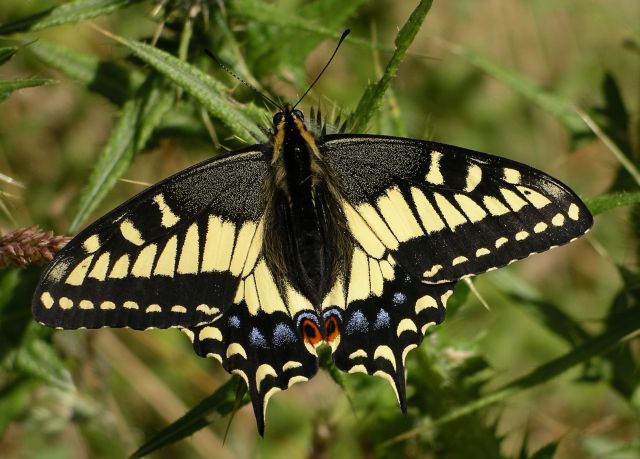
Anise Swallowtail (Papilio zelicaon)
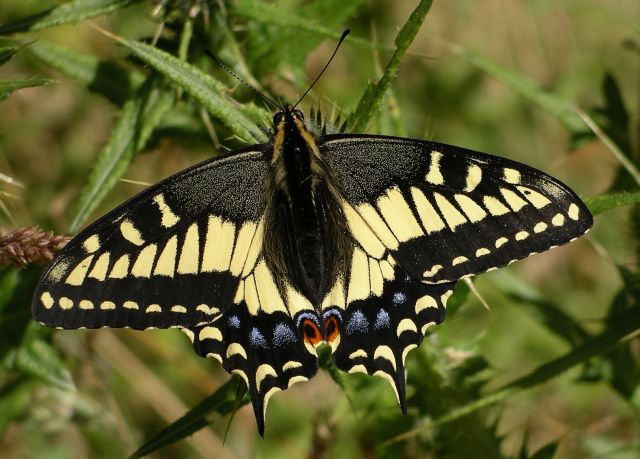
Swallowtails are so showy that people tend to notice them. A large, bright yellow butterfly with prominent tails is most certainly a swallowtail. Most species are yellow with black borders and bars. Swallowtails fly fast but with a relatively slow wingbeat due to their large size.

Anise Swallowtail (Papilio zelicaon)
Although related to the Swallowtails, these medium-sized white butterflies lack tails. Look for red spots to distinguish them from the whites. They fly slowly with a fluttery flight pattern.
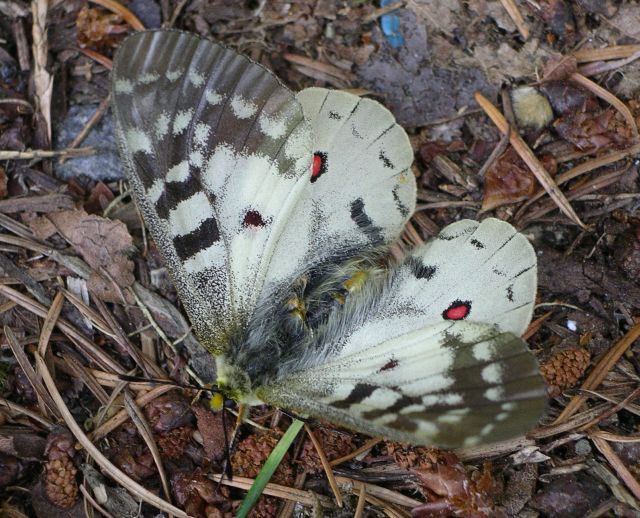
Clodius Parnassian (Parnassius clodius)
As the name implies, these are primarily white but with various patterns or marbling. The ubiquitous Cabbage White (this import is the bane of any gardner when in its catepillar form) can be found almost anywhere.
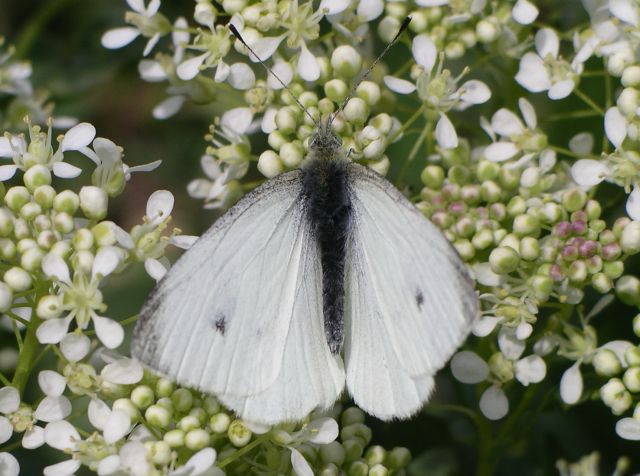
Cabbage White (Pieris rapae)
A medium-sized pale yellow butterfly is probably a sulphur. The Western Sulphur is common through the Cascades.
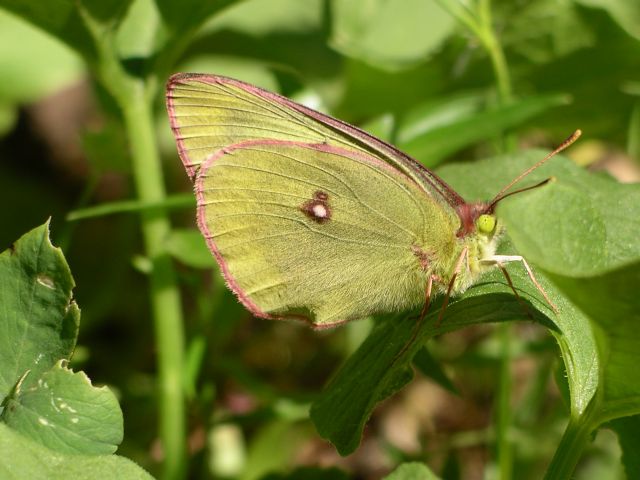
Western Sulphur (Neophasia menapias)
This is a family of little butterflies. Most species have a wingspan less than 2". There are 3 fairly distinctive subfamilies: Blues, Coppers, and Hairstreaks.
Although they are quite common, people often fail to notice the tiny blues (1-1.5"). The males are generally blue above while the females are usually some shade of brown or gray, perhaps with blue highlights. Both sexes are whitish below with diagnostic spot patterns.
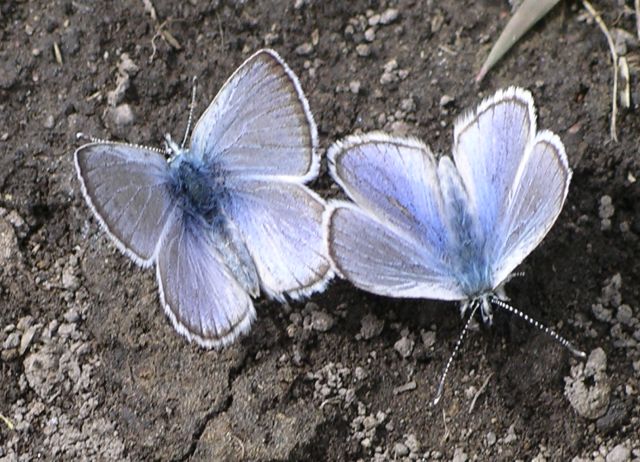
Boisduval's Blue (Plebeius icarioides)
The coppers are also small butterflies with diagnostic spots below and some coppery shade above, at least in the males. Just to keep things interesting, however, the common Blue Copper can be easily confused with the blues.

Tailed Copper (Lycaena arota)
If you notice a dark little triangle darting about, it may well be a hairstreak. Most of the hairstreaks have a white, black, or orange diagonal line across the forewing below. Many have short tails (except the Elfins) with spots at the base of the tail (probably to mislead predators).
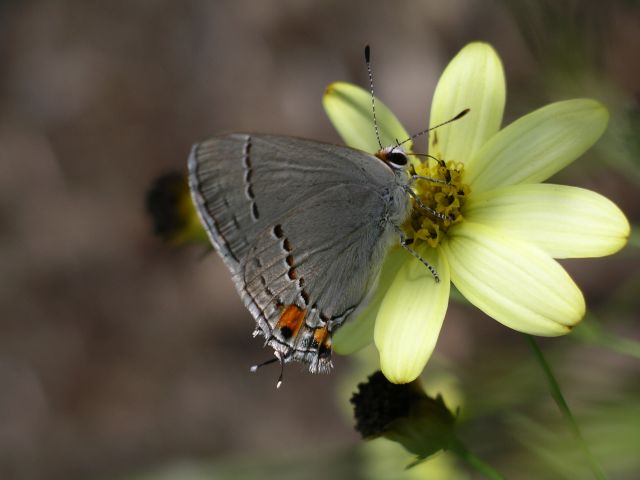
Gray Hairstreak (Strymon melinus)
The name Brush-foot refers to the very short, hairy front legs that distinguish the group. This diverse family includes several subfamilies.
The frillaries are a distinctive, bright orange above with a detailed black pattern. They can often be seen patrolling meadows and open woods. It is very easy to tell that you have a fritillary, but keying to species is a job for experts. You must contend with considerable variation among several regional subspecies as well as variation within each subspecies.
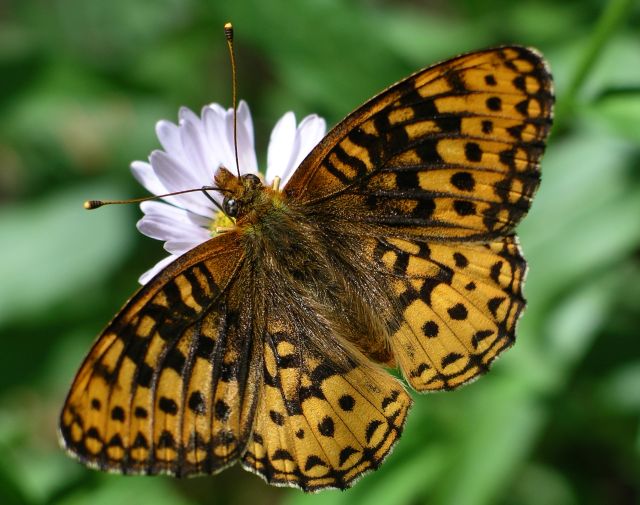
Atlantis Fritillary (Speyeria atlantis)
This family is diverse but the Paintd Lady is common and widespread.
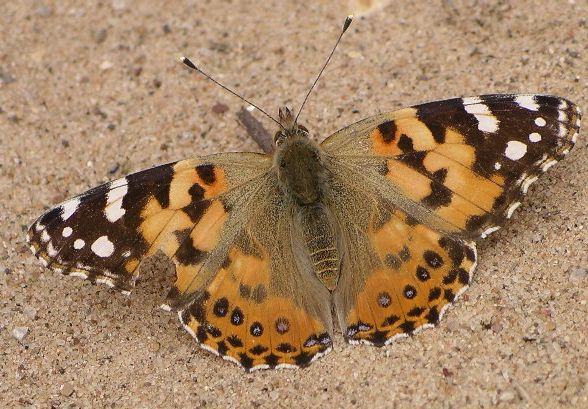
Painted Lady (Vanessa cardui)
Look for the male Admiral on a prominent branch along the road.
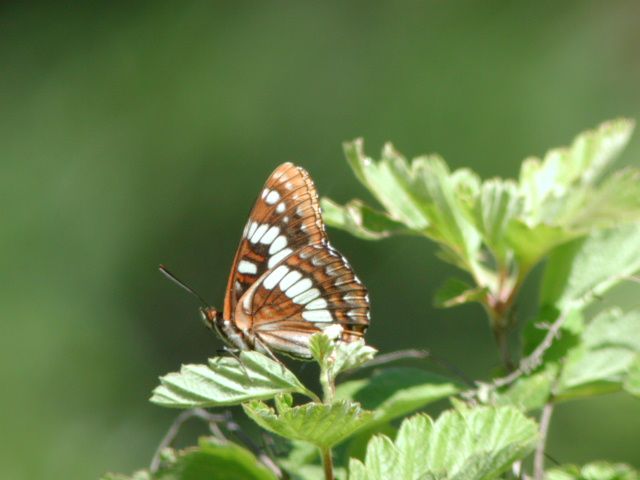
Lorquin's Admiral (Limenitis lorquini)
This group consists of medium sized brown butterflies with a bobbing flight. The upper side is brightly colored but they are camouflaged when the wings are folded. They often rest on trees rather than nectar at flowers.
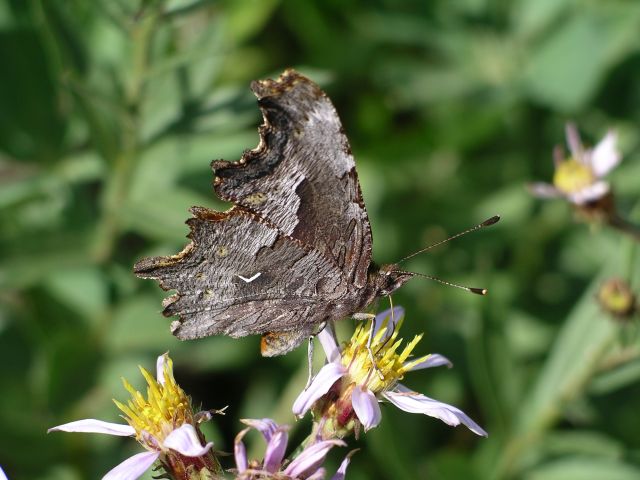
Hoary Comma (Polygonia gracilis)
The Monarch is famous for its long migration. It is also famous for advertising itself with bright colors, something that it can afford to do because it is poisonous to most predators. The catepillar feeds on milkweed and stores the toxins.
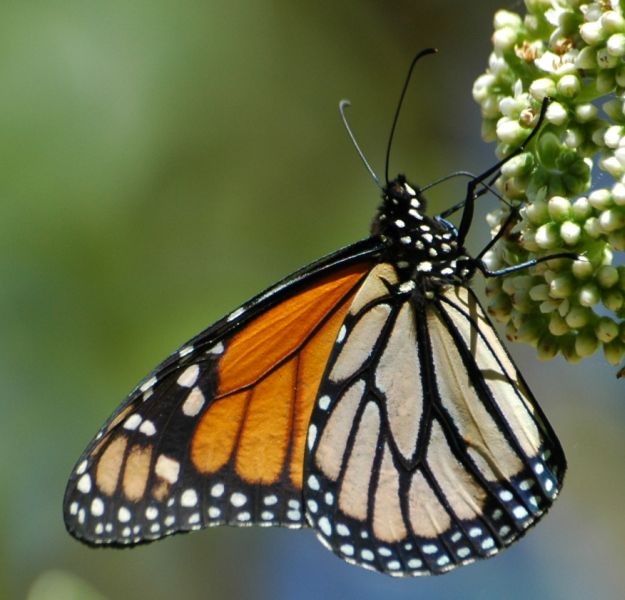
Monarch (Danaus plexippus)
You might not think that this insect is a butterfly at first glance. In fact, their evolution split from the rest of the butterflies early on. Their wings are small relative to their body size so they have a fast wing beat. The caterpillars primarily feed on grasses or sedges. Most species are tawny brown with various patterns of white spots and black borders.

Woodland Skipper (Ochlodes sylvanoides)